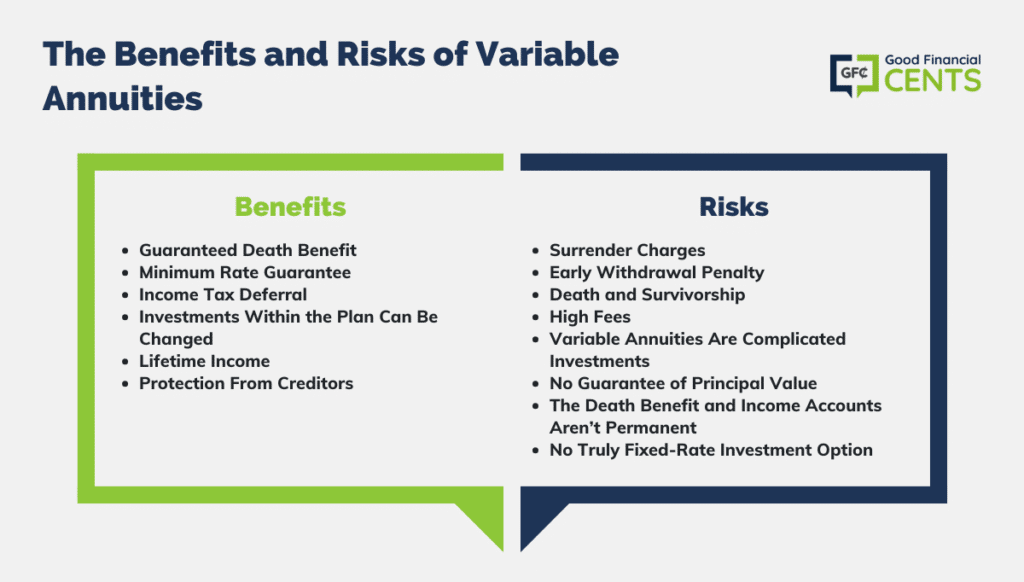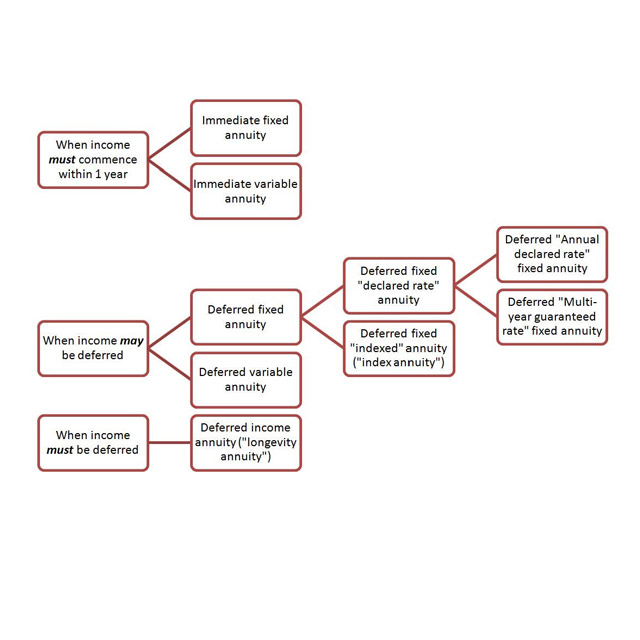All Categories
Featured
Table of Contents
Equally as with a fixed annuity, the owner of a variable annuity pays an insurance provider a lump amount or collection of payments for the pledge of a series of future payments in return. However as mentioned above, while a fixed annuity grows at an assured, consistent rate, a variable annuity grows at a variable price that relies on the efficiency of the underlying financial investments, called sub-accounts.

Throughout the accumulation stage, possessions purchased variable annuity sub-accounts grow on a tax-deferred basis and are tired only when the agreement owner withdraws those earnings from the account. After the build-up phase comes the earnings phase. Gradually, variable annuity properties need to theoretically enhance in worth till the agreement proprietor determines he or she want to begin taking out cash from the account.
The most substantial concern that variable annuities normally present is high expense. Variable annuities have several layers of fees and expenditures that can, in accumulation, produce a drag of up to 3-4% of the contract's worth each year.
Analyzing Strategic Retirement Planning Key Insights on Fixed Income Annuity Vs Variable Annuity What Is Fixed Income Annuity Vs Variable Annuity? Pros and Cons of Various Financial Options Why Choosing the Right Financial Strategy Can Impact Your Future Fixed Income Annuity Vs Variable Growth Annuity: How It Works Key Differences Between Annuities Variable Vs Fixed Understanding the Rewards of Annuities Variable Vs Fixed Who Should Consider Strategic Financial Planning? Tips for Choosing the Best Investment Strategy FAQs About Choosing Between Fixed Annuity And Variable Annuity Common Mistakes to Avoid When Choosing a Financial Strategy Financial Planning Simplified: Understanding Your Options A Beginner’s Guide to Smart Investment Decisions A Closer Look at How to Build a Retirement Plan
M&E expenditure costs are calculated as a percent of the agreement worth Annuity issuers hand down recordkeeping and various other management expenses to the agreement owner. This can be in the form of a flat annual cost or a percent of the agreement worth. Administrative fees may be consisted of as component of the M&E risk fee or might be examined separately.
These costs can range from 0.1% for easy funds to 1.5% or more for actively managed funds. Annuity contracts can be tailored in a number of ways to serve the specific demands of the contract proprietor. Some typical variable annuity motorcyclists consist of ensured minimum buildup advantage (GMAB), assured minimum withdrawal advantage (GMWB), and assured minimum income advantage (GMIB).

Variable annuity payments give no such tax obligation deduction. Variable annuities tend to be extremely inefficient automobiles for passing wealth to the future generation because they do not delight in a cost-basis adjustment when the initial agreement proprietor dies. When the owner of a taxed investment account passes away, the price bases of the financial investments kept in the account are adapted to mirror the marketplace prices of those investments at the time of the proprietor's fatality.
Analyzing Strategic Retirement Planning A Comprehensive Guide to Annuity Fixed Vs Variable What Is What Is Variable Annuity Vs Fixed Annuity? Benefits of Fixed Income Annuity Vs Variable Annuity Why Choosing the Right Financial Strategy Is a Smart Choice How to Compare Different Investment Plans: Explained in Detail Key Differences Between Different Financial Strategies Understanding the Risks of Long-Term Investments Who Should Consider Fixed Vs Variable Annuity Pros And Cons? Tips for Choosing Variable Annuities Vs Fixed Annuities FAQs About Fixed Vs Variable Annuities Common Mistakes to Avoid When Planning Your Retirement Financial Planning Simplified: Understanding Variable Annuity Vs Fixed Annuity A Beginner’s Guide to Smart Investment Decisions A Closer Look at How to Build a Retirement Plan
Such is not the case with variable annuities. Investments held within a variable annuity do not receive a cost-basis modification when the initial proprietor of the annuity dies.
One considerable problem connected to variable annuities is the possibility for conflicts of passion that may feed on the component of annuity salespeople. Unlike an economic advisor, who has a fiduciary responsibility to make financial investment decisions that benefit the customer, an insurance broker has no such fiduciary obligation. Annuity sales are highly lucrative for the insurance policy experts that sell them as a result of high ahead of time sales payments.

Many variable annuity contracts have language which places a cap on the portion of gain that can be experienced by specific sub-accounts. These caps avoid the annuity owner from totally getting involved in a section of gains that can otherwise be enjoyed in years in which markets create substantial returns. From an outsider's perspective, it would certainly seem that financiers are trading a cap on financial investment returns for the abovementioned assured flooring on financial investment returns.
As noted over, give up charges can badly limit an annuity owner's ability to relocate assets out of an annuity in the early years of the agreement. Even more, while a lot of variable annuities permit contract owners to withdraw a specified amount throughout the accumulation stage, withdrawals yet quantity usually lead to a company-imposed fee.
Withdrawals made from a fixed rates of interest investment choice can likewise experience a "market value modification" or MVA. An MVA changes the value of the withdrawal to reflect any type of changes in rates of interest from the time that the money was purchased the fixed-rate alternative to the moment that it was taken out.

Quite usually, even the salesmen who market them do not totally comprehend exactly how they work, therefore salesmen sometimes exploit a customer's emotions to offer variable annuities instead of the merits and viability of the products themselves. Our company believe that financiers must completely comprehend what they possess and how much they are paying to own it.
Understanding Fixed Indexed Annuity Vs Market-variable Annuity A Closer Look at How Retirement Planning Works What Is the Best Retirement Option? Pros and Cons of Variable Annuity Vs Fixed Indexed Annuity Why Tax Benefits Of Fixed Vs Variable Annuities Can Impact Your Future How to Compare Different Investment Plans: How It Works Key Differences Between Different Financial Strategies Understanding the Risks of Long-Term Investments Who Should Consider Strategic Financial Planning? Tips for Choosing the Best Investment Strategy FAQs About Planning Your Financial Future Common Mistakes to Avoid When Planning Your Retirement Financial Planning Simplified: Understanding Your Options A Beginner’s Guide to Variable Annuities Vs Fixed Annuities A Closer Look at How to Build a Retirement Plan
Nonetheless, the very same can not be stated for variable annuity properties kept in fixed-rate financial investments. These assets lawfully come from the insurer and would for that reason go to danger if the business were to stop working. In a similar way, any kind of assurances that the insurance firm has concurred to offer, such as an ensured minimum earnings benefit, would remain in question in the event of a company failing.
Prospective buyers of variable annuities need to comprehend and consider the financial problem of the releasing insurance company prior to entering into an annuity agreement. While the advantages and drawbacks of numerous types of annuities can be disputed, the actual concern surrounding annuities is that of viability. Place just, the inquiry is: that should have a variable annuity? This inquiry can be hard to address, provided the myriad variations available in the variable annuity universe, but there are some fundamental guidelines that can aid investors decide whether or not annuities need to play a role in their financial strategies.
As the claiming goes: "Customer beware!" This short article is prepared by Pekin Hardy Strauss, Inc. Fixed indexed annuities. ("Pekin Hardy," dba Pekin Hardy Strauss Riches Management) for informative objectives just and is not intended as a deal or solicitation for organization. The information and information in this write-up does not constitute lawful, tax obligation, accountancy, investment, or other specialist advice
Table of Contents
Latest Posts
Breaking Down Fixed Annuity Or Variable Annuity Key Insights on Your Financial Future Breaking Down the Basics of Investment Plans Pros and Cons of What Is A Variable Annuity Vs A Fixed Annuity Why Ch
Breaking Down Your Investment Choices Everything You Need to Know About Tax Benefits Of Fixed Vs Variable Annuities Breaking Down the Basics of Investment Plans Pros and Cons of Fixed Income Annuity V
Understanding Fixed Vs Variable Annuities Key Insights on Fixed Vs Variable Annuity Pros Cons Breaking Down the Basics of Investment Plans Benefits of Variable Vs Fixed Annuity Why Annuities Variable
More
Latest Posts